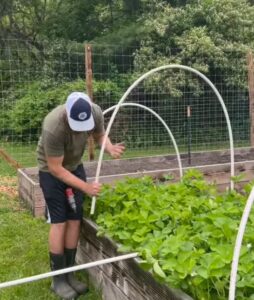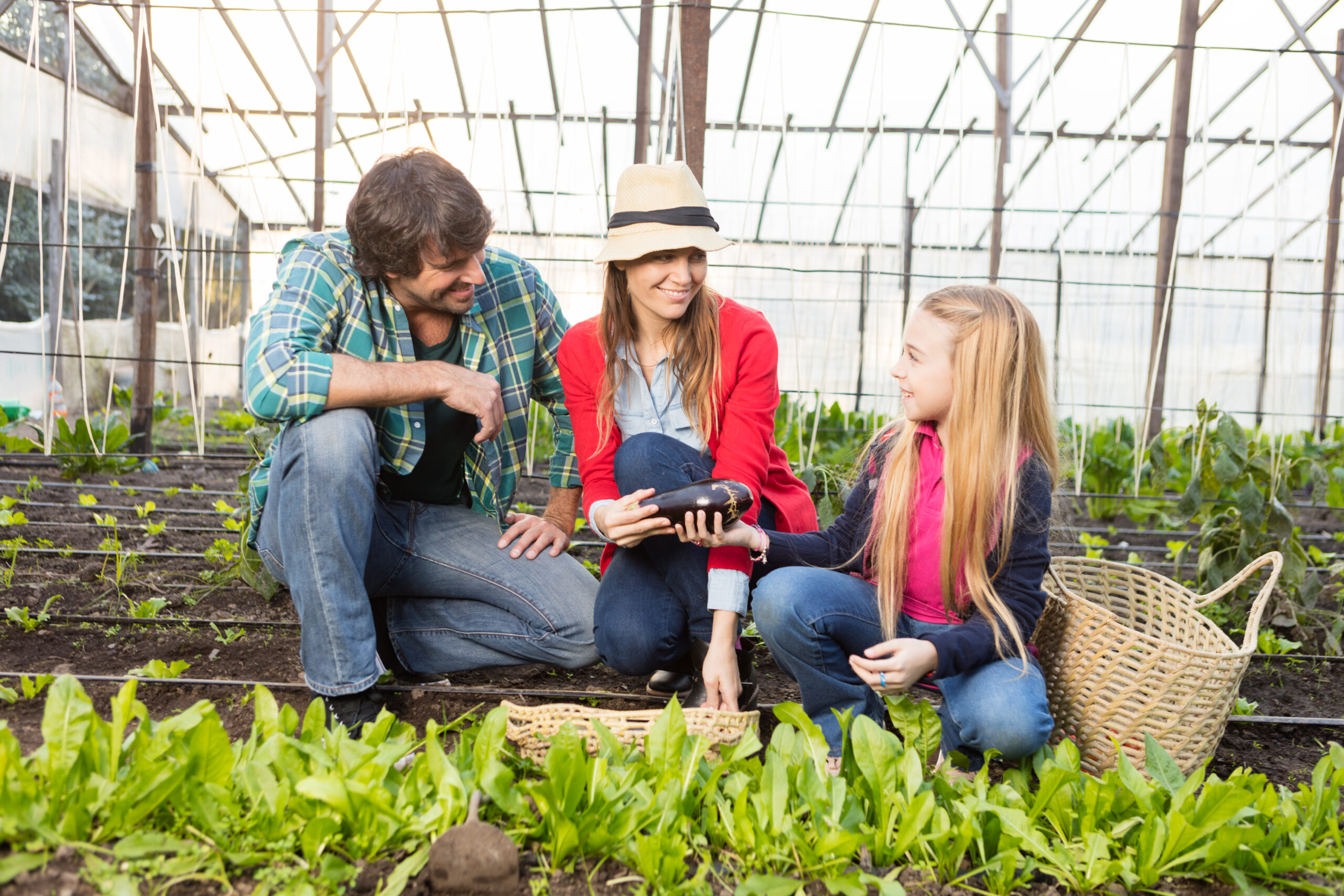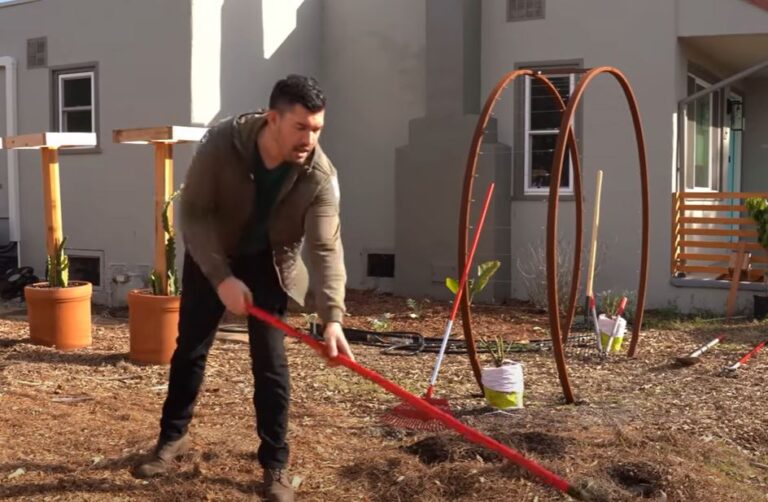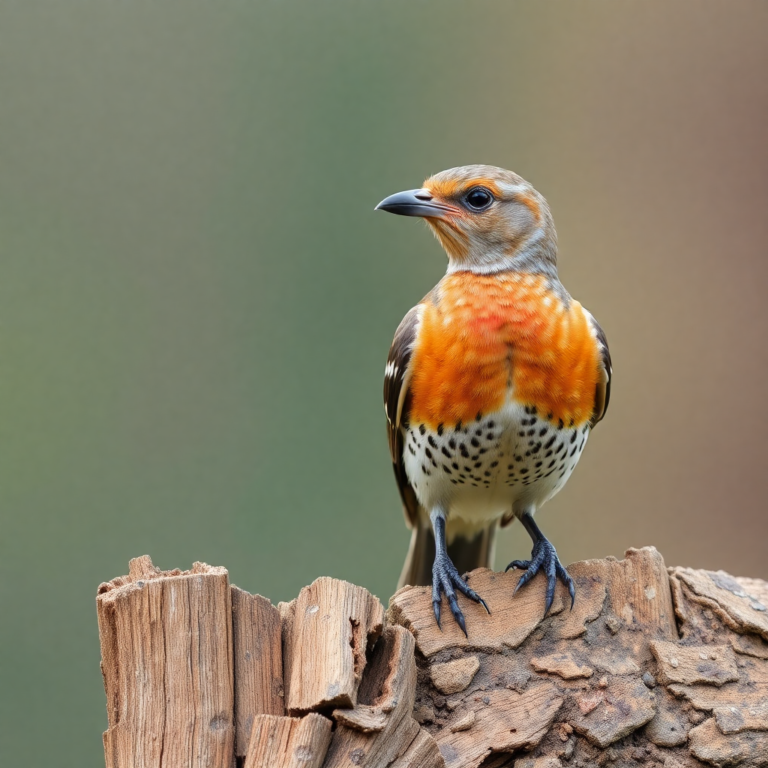how to keep birds out of the vegetable garden
Use netting, row covers, reflective objects, scarecrows, predator decoys, ultrasonic devices, sacrificial plants, and motion-activated sprinklers to protect crops without harming birds.
If you have ever planted a garden, you know the frustration of watching birds swoop in and feast on your hard work.
Seeds vanish before they sprout, ripe berries disappear overnight, and vegetables get pecked just as they are ready to harvest.
I faced this problem in my own backyard, and it quickly became clear that protecting crops is just as important as watering and fertilizing them.
Safeguarding your plants matters for more than just your harvest. Birds are part of a healthy ecosystem, and many species help control pests or pollinate plants.
The goal is not to harm them but to create balance so both you and the birds can thrive. Choosing the right method keeps your crops safe while respecting wildlife.
Table of Contents
ToggleIdentify the Problem
Gardeners today have several humane solutions to reduce bird damage. From reflective deterrents and motion devices to netting, scare balloons, and companion planting, there are practical strategies that really work. In the sections ahead, I will share the techniques that I have tested and seen fellow gardeners recommend, along with tips to help you decide which option is best for your garden.

Before you protect your garden, it helps to understand what birds are after. Certain crops attract them more than others. Berries such as strawberries, blueberries, and raspberries are top favorites. Birds also peck at tomatoes once they start to ripen, often leaving holes that ruin the fruit. Tender seedlings, especially sunflowers, peas, and leafy greens, are another easy target in the early stages of growth.
The signs of bird damage are easy to spot once you know what to look for. You might notice half-eaten fruit still hanging on the plant. Seedlings may disappear overnight, leaving bare soil where sprouts should be. Peck marks or small holes in tomatoes, apples, or peppers often mean a bird has claimed the first bite. Sometimes, you will even find scattered fruit skins or seeds around the base of the plant.
Timing also matters. Birds tend to be most active in the early morning, especially during spring and summer when they are feeding young. They are quick to swoop in at dawn before you step into the garden. Another critical time is the ripening season, when fruits and vegetables reach peak color and flavor. Birds have sharp eyes for ripeness and will often beat you to the harvest if you do not act in time.
By learning which crops are at risk, recognizing the damage, and noting when birds are busiest, you can take action before your harvest disappears.
Physical Barriers
Physical barriers remain one of the most reliable ways to keep birds out of your garden. They block access without harming wildlife and can be adapted for different crops and spaces.
A. Garden Netting
Garden netting works best for fruit trees, berry bushes, and vegetable beds. The mesh prevents birds from reaching ripe crops while still allowing sunlight and rain through.
To install it properly, drape the netting over plants and secure the edges to the ground with stakes, clips, or heavy stones. For trees, build a simple frame or use poles to lift the netting above the canopy so birds cannot slip inside.
Pros: Affordable, reusable, lightweight, and highly effective.
Cons: Can tangle if not stored carefully and may be tricky to fit over large trees.
B. Row Covers or Plant Covers
Row covers use lightweight fabric that rests directly over seedlings or attaches to hoops. They create a barrier that keeps birds from pecking at young sprouts.
These covers also double as protection against insects and harsh weather. Choose breathable material so plants receive enough light and moisture.
Pros: Protects multiple threats at once, easy to set up, reusable.
Cons: Needs to be lifted for watering and harvesting.
C. Fencing Options
Fencing adds long term protection for larger spaces. Wire mesh or chicken wire works well around vegetable patches and raised beds.
The barrier not only blocks birds but also keeps rabbits, squirrels, and other small animals from sneaking in. For best results, secure the bottom edge into the soil so pests cannot dig under.
Pros: Durable, long lasting, and effective against multiple animals.
Cons: Higher upfront cost and requires installation time
Visual Deterrents
Visual deterrents use movement, light, and predator cues to keep birds away from gardens. They do not harm wildlife and can be combined with other methods for stronger protection.
A. Scarecrows
Scarecrows remain one of the oldest bird control tools. They sometimes work well in open fields where birds are cautious of tall, human shaped figures.
However, birds often adapt if the scarecrow never changes. To keep them guessing, dress it with bright colors, add moving parts like ribbons, or shift its position every few days. A scarecrow combined with sound or reflective elements lasts longer as a deterrent.
B. Reflective Objects
Shiny materials confuse birds by creating sudden flashes of light. Gardeners often hang old CDs, reflective tape, or aluminum foil strips on tree branches and fence posts.
As the wind moves them, sunlight bounces in different directions, making the area feel unsafe for birds. Reflective deterrents are inexpensive, easy to set up, and effective around fruit trees and berry bushes.
C. Predator Decoys
Decoys of owls, snakes, or hawks tap into birds’ natural fear of predators. Placing a fake owl on a fence post or a rubber snake near a berry patch often keeps birds at a distance.
To stay effective, move the decoys around the garden every few days. Birds quickly learn when a predator never moves. Pairing decoys with sound or reflective items increases their impact.

Auditory Deterrents
Sound can play a powerful role in keeping birds away from crops. Many gardeners use noise based solutions either as a standalone method or alongside visual barriers for better results.
Ultrasonic Bird Repellent Devices
These devices emit high frequency sounds that humans cannot hear but birds find disturbing. Some models also include predator calls to increase effectiveness. They work best in smaller areas such as patios, orchards, or vegetable patches.
However, not all birds respond the same way. Certain species may ignore ultrasonic waves after repeated exposure, so it helps to combine these devices with visual deterrents.
Wind Chimes and Noise Makers
Simple tools like wind chimes, metallic cans, or even plastic bottles rattling in the wind can create enough irregular noise to discourage birds. The random clattering makes gardens feel unsafe for feeding.
These options are low cost and add a decorative touch, but they are most effective in breezy areas where the sound remains unpredictable.
Pros and Limitations
Auditory deterrents offer a humane, non invasive way to reduce bird damage. They are easy to install and work immediately. Yet, their biggest challenge is consistency. Birds may adapt if the sounds stay the same every day.
For best results, mix sound based tools with visual deterrents or netting. This layered approach prevents birds from getting comfortable and keeps your garden protected throughout the growing season.

Garden Plant Strategies
Using plants strategically can help protect your crops without harming birds.
Sacrificial Plants
Planting sunflowers, millet, or other bird favorites around the garden can distract birds from your main crops. Birds will feed on these sacrificial plants, leaving tomatoes, berries, and peppers safer.
Companion Planting
Hiding vulnerable crops among larger or bushier plants makes it harder for birds to find them. For example, planting leafy greens under tall corn or sunflowers can provide natural cover.
Dense Planting
Closely spaced plants create a physical barrier that discourages birds from landing or feeding. It also reduces exposed fruit and seeds, giving your harvest better protection.
Natural & Humane Repellents
Non-toxic solutions offer safe ways to protect crops while keeping birds healthy.
Bird Repellent Sprays
These sprays taste or smell unpleasant to birds without harming them. Apply directly to fruit or leaves to reduce nibbling. Always follow product instructions for edible crops.
Motion-Activated Sprinklers
These devices startle birds with short bursts of water. They are highly effective in open gardens, orchards, and berry patches. Birds quickly learn to avoid the area.
Keep Feeders Away from Crops
Feeding birds in a separate area of your yard can reduce pressure on your garden. By offering food elsewhere, you divert birds naturally without harming them.
Frequently Asked Questions
1. Will netting harm the birds?
No. Properly installed garden netting prevents birds from reaching your crops without injuring them. Make sure it is taut and high enough so birds cannot get tangled.
2. How often should I move scarecrows or decoys?
Move them at least once a week. Birds quickly learn if objects remain stationary. Frequent repositioning keeps them uncertain and effective.
3. Do reflective objects really work?
Yes. Hanging CDs, foil strips, or reflective tape creates flashes of light that birds find unsettling. The movement in the wind increases effectiveness.
4. Are ultrasonic devices safe for pets and humans?
Most ultrasonic bird repellents are safe for people and pets. Check the manufacturer’s instructions to ensure they operate at a frequency that affects only birds.
5. Can sacrificial plants fully protect my crops?
They help, but are most effective when combined with other strategies like netting or motion deterrents. Sacrificial plants reduce bird pressure, not eliminate it completely.
6. How do I prevent birds from getting used to auditory deterrents?
Rotate sounds or combine them with motion or visual deterrents. This unpredictability keeps birds cautious and away from your crops.
7. Are bird repellent sprays safe for edible plants?
Yes, if labeled for edible crops. Always rinse fruits or vegetables if instructed, and follow the application schedule for best results.
8. When are birds most active in the garden?
Birds are usually most active in early mornings and late afternoons, especially during ripening season. Extra protection during these times can reduce damage
Here’s a clear, SEO-friendly Action Guide table summarizing bird deterrent strategies for gardens:
| Strategy Type | Method | Best Use | Pros | Cons / Tips |
|---|---|---|---|---|
| Physical Barriers | Garden Netting | Fruit trees, berries, vegetable beds | Highly effective, safe for birds | Must install tautly; check regularly for gaps |
| Physical Barriers | Row / Plant Covers | Seedlings, delicate crops | Protects young plants, also blocks insects | Remove for sunlight and pollination |
| Physical Barriers | Fencing | Small gardens, raised beds | Blocks birds and small animals | Needs proper height; secure edges |
| Visual Deterrents | Scarecrows | Open fields, orchards | Low-cost, traditional | Move frequently to stay effective |
| Visual Deterrents | Reflective Objects | Fruit trees, berry bushes | Confuses birds with light reflection | Wind needed for movement; avoid tangling |
| Visual Deterrents | Predator Decoys | Orchards, gardens | Exploits bird fear instincts | Must reposition regularly; birds can habituate |
| Auditory Deterrents | Ultrasonic Devices | Fruit trees, raised beds | Humane, hands-off | Effect varies by species; rotate location |
| Auditory Deterrents | Wind Chimes / Noise Makers | Gardens, small plots | Adds motion and sound deterrence | Birds may adapt over time; combine with other methods |
| Garden Plant Strategies | Sacrificial Plants | Sunflowers, millet | Distracts birds from main crops | Use in combination with other deterrents |
| Garden Plant Strategies | Companion / Dense Planting | Vulnerable crops | Reduces visibility of edible crops | Works best with layered strategies |
| Natural & Humane Repellents | Bird Repellent Sprays | Edible crops | Non-toxic, safe for humans | Follow label instructions; may need reapplication |
| Natural & Humane Repellents | Motion-Activated Sprinklers | Vegetable beds, orchards | Startles birds effectively | Needs water source; check sensors for sun/wind issues |
| Natural & Humane Repellents | Keep Feeders Away | Entire garden | Diverts birds to other areas | Feeders should be far from crops to work |
Conclusion
Birds may sometimes feel like garden enemies, but they’re also an important part of the ecosystem — eating pests, spreading seeds, and keeping nature balanced. The goal isn’t to harm them, but to guide them away from your fruits and vegetables.
The most effective approach is usually a combination of methods: use netting for vulnerable crops, add visual or sound deterrents for extra protection, and try motion-activated devices if birds are persistent. No single trick works for every garden, so don’t be afraid to experiment.






